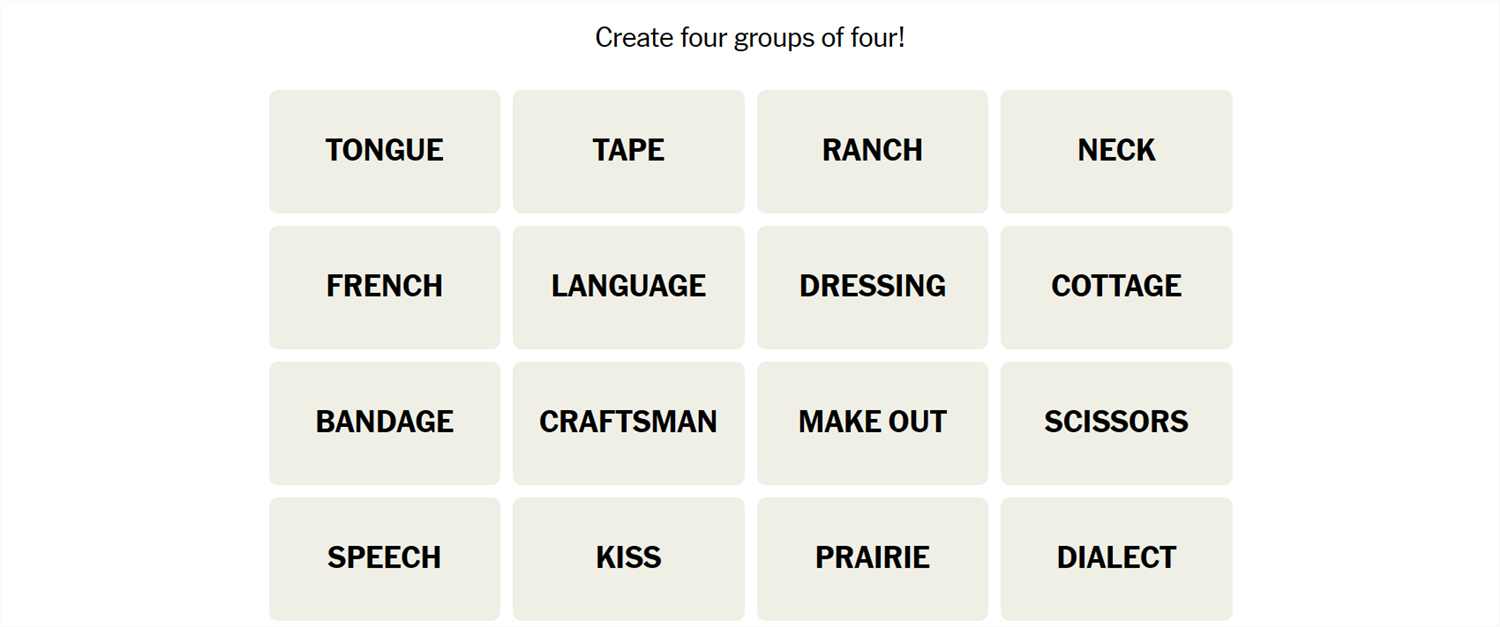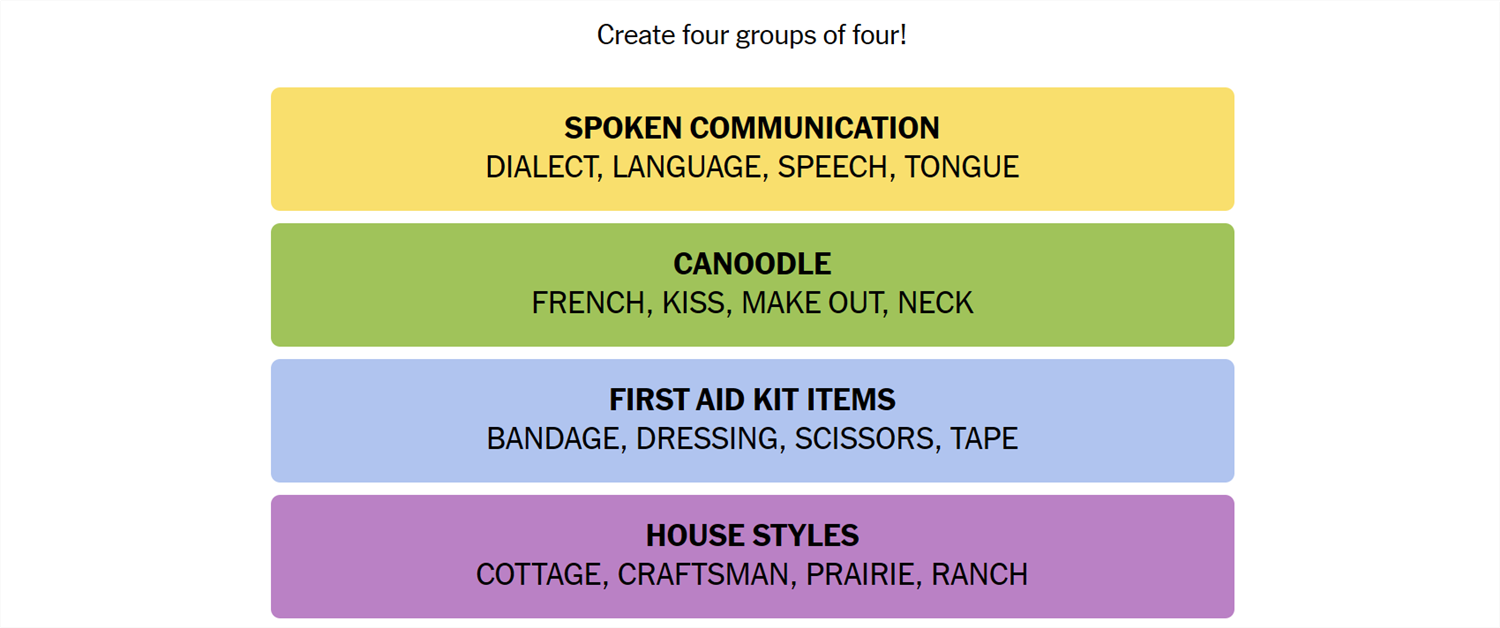Connections is a game from the New York Times that challenges you to find the association between words. It sounds easy, but it isn’t—Connections categories can be almost anything, and they’re usually quite specific. If you need a hand getting the answers, we’ve got you covered.
What Is Connections?
Connections is a game from the New York Times. The objective is simple: sort 16 words into groups of 4. Each group of words will be connected by some common idea or theme. That common element could be anything. We have seen everything from games that rely on the number of letters in the words to categories that require you to spot an extra letter at the end of the word. Sometimes they’re references to economics, other times they reference fairy tales. There is no telling what sort of association there will be between words.
Once you’re confident you understand the connection, select 4 words, then hit “Submit.” You have only four attempts in total, so don’t be too guess-happy.
Hints for Today’s Connections Groups
Here are a few hints for the 432nd Connections game to get you started:
- Yellow: Related to how we speak.
- Green: Romantic, usually.
- Blue: What you might need for an emergency.
- Purple: Ways to build a home.
If you still need help, the actual group names are:
- Yellow: Spoken Communication
- Green: Canoodle
- Blue: First Aid Kid Items
- Purple: House Styles
Today’s NYT Connections Answers
Spoken Communication (Yellow):
Dialect, Language, Speech, Tongue
Canoodle (Green):
French, Kiss, Make Out, Neck
First Aid Kit Items (Blue):
Bandage, Dressing, Scissors, Tape
House Styles (Purple):
Cottage, Craftsman, Prairie, Ranch
How Did We Solve This Connections Game?
Today’s game was pretty straight forward, though Green and Purple threw me.
The first group I got was Yellow, “Spoken Communication.” I was tipped off by the combination of dialect and tongue—nothing else really matched with them, and from those two words, it was easy to pick up language and speech.
With tongue out of the way, french, kiss, make out, and neck all seemed likely to be in a group related to… kissing? I was dubious, but it turned out that they were indeed in a group. I think “Canoodling” (the name of the Green group) might be the most elegant term for kissing in the English language.
Bandage, dressing, scissors, and tape are all evocative of something medical. They bring to mind images of cuts, stitches, and other injuries, so I placed them together. They were in the Blue group.
That left cottage, craftsman, prairie, and ranch. Cottage and ranch made me think of things you might put on food (not that I’d ever put ranch or cottage cheese on the same thing), but craftsman and prairie made absolutely no sense in that context. Without any leads, I just gave up and revealed the answer. Purple was “House Styles,” something I should have gotten.
How Do You Guess Connections Groups?
There is no quick, reliable way to approach Connections like there is with Wordle, since Connections isn’t algorithmic. However, there are a few things to keep in mind that can help.
- Look for similar parts of speech. Are some words verbs and others nouns? Are some adjectives? Try mentally grouping them based on those categories and see if any other patterns jump out at you.
- Are the words synonyms? Sometimes categories will just be synonyms for a phrase, or very close to synonyms. Don’t rely too closely on this, though. Occasionally, Connections will deliberately throw in words that are sometimes synonyms to mislead you.
- Try saying the words. Sometimes, saying the words helps. One puzzle we saw included the words go, rate, faster, clip, pace, speed, move, commute, and hurry—all of which are obviously related to the idea of motion. However, when you say them, it becomes a little more obvious that only four (go, move, hurry, faster) are things you’d actually say to prompt someone to get moving.
- Expect the red herring. Connections usually has words that could be plausibly, yet incorrectly, grouped together. Take the words Bud, Corona, and Light, as an example. You might instinctively see those three words together and assume they’re lumped together in a category related to beer—but they weren’t.
- Look for distinct words. If a word on your board doesn’t have multiple meanings or can really only be used in one context, try using that word as the basis for a category.
- Shuffle the board. Sometimes, moving words around will help you look at them in new ways.
If you didn’t solve this one, don’t feel too bad—there’s always tomorrow! And those words may align with a topic you’re interested in, giving you a leg up on the competition.





